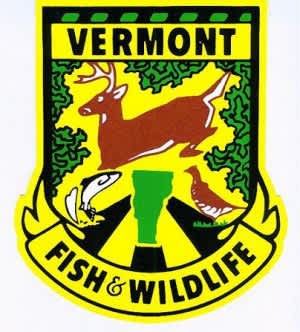Vermont Bear Season is September 1- November 14
OutdoorHub 08.21.12

Vermont’s bear hunting season is September 1- November 14 this year.
Vermont’s bear population is now estimated at slightly more than 6,000 black bears, according to the Vermont Fish and Wildlife Department. The number of bears has increased during the last two decades and is now higher than the objective of 4,500-6,000 bears listed in Vermont’s Big Game Management Plan for 2010-2020.
“Twenty-five years ago Vermont’s bear population was less than 3,000, and bears existed primarily in the mountains and in the Northeastern quarter of the state,” said wildlife biologist Forrest Hammond. “Through changes in hunting regulations identified in the previous Big Game Management Plan, we successfully encouraged bears to increase in number and expand into towns where their numbers were low.”
“But,” added Hammond, “now we are seeing more incidents of bears doing damage, primarily where they are attracted to foods such as bird seed, pet food left outside, garbage containers, bee hives, chicken coops, barbecues, livestock, and field corn.
“Carefully regulated hunting plays a very important role in wildlife management by helping to control the growth of the black bear population and allow for the sustainable utilization of black bears for food and other purposes,” said Hammond. “We will continue to closely monitor the success of bear hunters this fall and plan to recommend regulation changes that will result in slightly more bears being taken in future years.”
Although wearing fluorescent orange clothing is not mandatory for hunting in Vermont, hunters and others are urged to wear a fluorescent orange vest and hat while in the woods. Anyone hunting deer during archery season, waterfowl or turkeys will normally wear camouflage clothing.
Hammond reminds hunters that they are required to collect a small pre-molar tooth from each harvested bear, because, he stressed, “The collection of a premolar tooth from every bear reported is critical to the bear project.
“The tooth is actually quite small and easy to loosen with a knife,” he added. “Directions for removing the tooth are on the back of the envelope provided by the check station. We are able to age the bear and gain essential knowledge about the status of Vermont’s bear population.”
Hunters in the towns of Readsboro, Searsburg, and Whitingham are urged to use special caution to avoid shooting bears wearing radio collars. These marked bears are an important part of a study being started this fall in conjunction with the Deerfield Wind Project. If a bear wearing a collar is mistakenly harvested it is crucial that the collar be turned in to the Fish and Wildlife Department.
Hunters took 396 bears last year in Vermont. A report listing the number of bears taken in each town during the 2011 bear season is available on Vermont Fish and Wildlife’s website at (vtfishandwildlife.com). Click on “Hunting and Trapping” and then “Big Game.”

